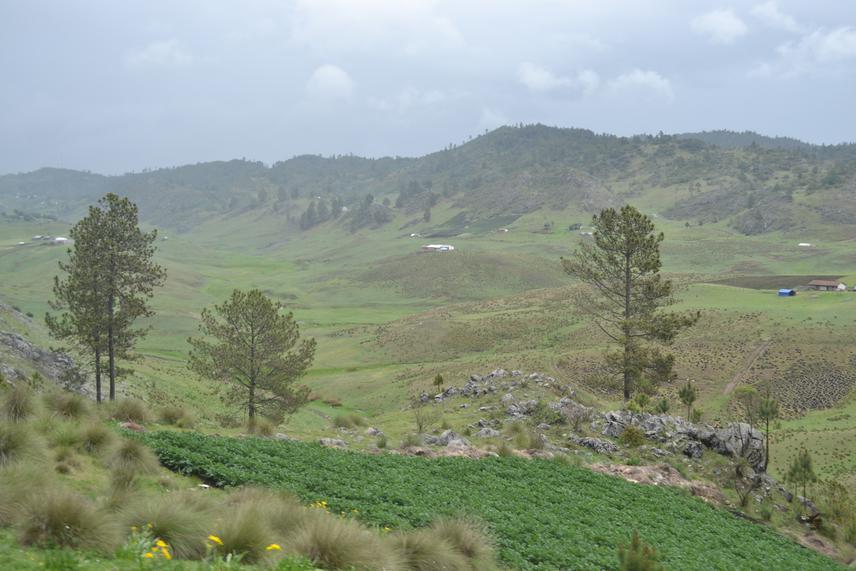Manuel Alejandro Barrios Izas
Other projects
24 Jun 2015
Strengthening Montane Ecosystems Conservation at Guatemala Assessing it from Leaf Litter Weevil Diversity and Endemism’s
The aim is to determine the importance of montane ecosystems in the conservation of terrestrial arthropods and to contribute to their protection at the Guatemalan Volcanic Arc.

Los Cuchumatanes Highlands.
The Guatemalan Volcanic Arc (GVA) constitutes one of the most important biogeographic areas from Mesoamerica, it is located at the pacific basin and extends from Mexico to El Salvador between altitudes of 800 and 4,220 masl. It also provides a great quantity of natural resources (ex. Water, timber, food, natural medicine, etc.) to the native Mayan communities of Guatemalan highlands and most of the water to the most productive lowlands of Guatemala, in terms of agriculture, at the pacific basin.
Through this project we will survey the leaf litter inhabiting weevils from the Guatemalan Volcanic Arc (GVA) at pine, oak, cloud and low montane pluvial forests. The volcanoes that will be surveyed are Tacaná (4060m), Tajumulco (4220m), Chicabal (2900), Santa María (3772m), Santo Tomás (3542m), San Pedro (3020), Siete Orejas (3370m) Atitlán (3535m), Acatenango (3976), Agua (3760m), Tecuamburro (1840m), Suchitán (2042) and Chingo (1775m). All Guatemalan volcanoes were protected on 1956 but their limits and zonation were never established.
Weevils are by far the most diverse group of organisms and they inhabit anywhere plants are present. Leaf litter weevils are poorly known and especially at tropics. They are part of the meso and macrofauna of the litter of forests where the most part of the energy passes through the ecosystem. Habitat loss is the major threats for tropical montane forests so conservation efforts should be performed. Leaf litter weevils are good group for assessing the conservation of GVA ecosystems because of their high richness, endemism and their sensitivity to ecosystem perturbations Biological data will be analysed by measuring alpha and betha diversity. Species richness estimation will also performed. Ecological and climatic variables that affects the diversity of weevils will also be explored and modelled. Priority analysis of areas will be performed using species richness and species endemism, for it areas will be prioritized by first selecting those areas with highest quantity of species and then selecting complementary areas that increase the number of species to be conserved.
Social information about the actual use of natural resources and priorities for conservation at local communities will also be conducted. For this purpose we will establish a technical board with local leaders, governmental authorities and other social organizations. The biological and social information will be useful for assessing the priorities of conservation at the GVA.